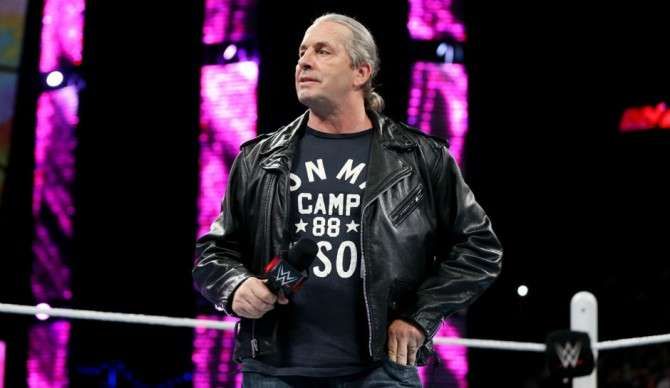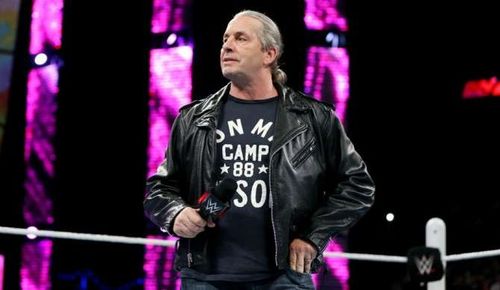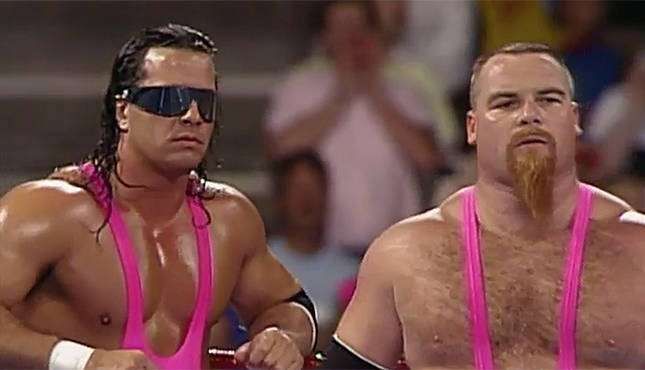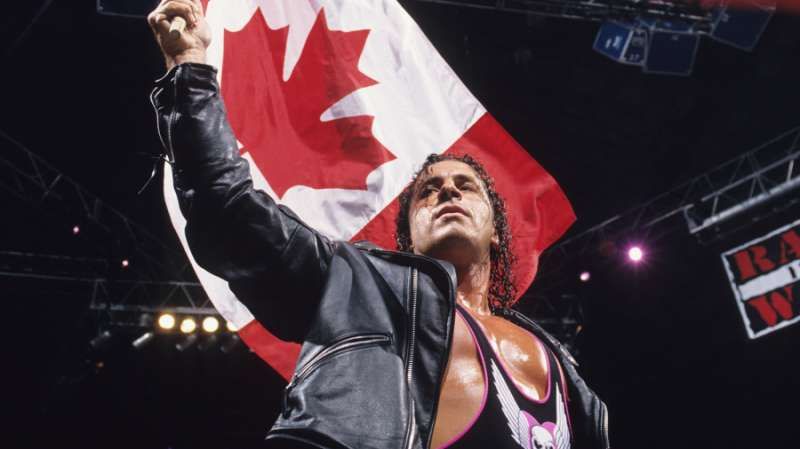
Bret 'the Hitman' Hart: The unlikely sharpshooter who struck gold
What could be the value of pink, reflective, wrap-around sunglasses?
At first glance, they look overly flashy, the kind best suited for X-Men’s Cyclops if he were a fashion-crazed hipster. You might receive a few second looks if you strut down the street wearing one, but the jury is out on whether those looks would be screaming ‘does he have conjunctivitis?’ or ‘is he cosplaying Govinda?’
But then why did they become so desirable? Why did the sight of children getting those oversized, pink shades fill you with both joy and envy? Maybe it was never about the sunglasses. Maybe it was always about the man who was synonymous with them.
Bret ‘the Hitman’ Hart was a wrestler of dichotomy. He was a traditionalist’s delight, yet a trailblazer. He was a product of his father’s hyper-masculine dungeon, yet wore bright pink wrestling gear. He was said to be lacking the ‘It’ factor, yet became a fan favourite.
Although born into the First Family of wrestling in Calgary, Bret was as much an outsider in the early 1990s WWF as a luchador. Yet he succeeded to become one of its unlikeliest stars.
Different from the pack
The opening guitar screech of Bret’s entrance theme was an announcement, a declaration that the audience was about to witness a wrestler who was not cut from the same cloth as others.
Out came Bret wearing a seductive black jacket over his inimitable bubblegum pink outfit. His approach to the ring mirrored the approach he would adopt inside it. He did not sprint like the Ultimate Warrior; he took measured yet decisive steps.
As he walked down the ramp, Bret extended his arms, letting those in attendance get a feel of Canadian royalty. He then approached the fans, slid those pink shades down the back of his head and put them on a kid. Cue hysteria.
Bret, however, wasn’t supposed to be a crowd-puller in Vince McMahon’s circus of jacked up men. In fact, if there was a checklist of pre-requisite traits needed to be a WWF megastar, he would probably have had crosses before each entry.
Size: X
Buffed up physique: X
Larger-than-life gimmick: X
Before he was main eventing Wrestlemanias, the Hitman created a niche for himself as a tag team specialist in the mid-card. But while most wrestlers use ‘charisma’ to climb up the popularity ladder, Bret won over the audience through his in-ring prowess, all the while making his opponents look equally good.
Oozing legitimacy
For a pro-wrestling fan, the purest way to enjoy the craft is by forgetting that it’s scripted. It’s only when we’re divorced from the world of ‘kayfabe’ and ‘booking’ that we can truly immerse ourselves in what is happening in the ring. Bret’s realistic in-ring style gave pro-wrestling viewers the legitimate excuse they needed to suspend disbelief.
In his era, Bret was perhaps the only wrestler who gave the impression that he had his matches strategised, which ensured that they came across as a ‘legitimate’ physical contest. When competing against wrestlers who outsized him, Bret would target a particular body part of theirs.
He would stomp on their leg, lock in submissions, and ram it against the ring post, conveying to the viewer that the smaller guy was cutting down his larger opponent. Most wrestlers used words to tell stories; the ‘excellence of execution’ used wrestling.
And the viewers, no longer content with being passive listeners, went on a private journey of their own as his match progressed.
They cheered when Bret methodically targeted his opponents. They fell silent when the opponent put a beating on him. They broke into elation when he countered. And then Bret stood over his fallen rival. They knew what was coming. He picked up the foe’s legs. They stood up.
He then stepped between the opponent’s legs and crossed them around his own. They egged him on. The Hitman, who at this point displayed that he was near exhaustion, tried to flip over his adversary. They telepathically assisted him, transporting their strength into Bret. He finally turned his opponent over. The sharpshooter was locked. The opponent tapped. The crowd erupted.
In a world of dead men, giants and whatever Kamala was, Bret came across as a real competitor in an unreal sport.
Of setbacks and pathos
Well begun might be half done but sometimes the latter half overshadows the beginning, especially if it doesn’t meet the standards set before. Bret’s career is plagued with blemishes that threaten to take the sheen off his journey.
The Montreal Screwjob will continue to be placed as an ugly asterisk below the pages written on Bret’s life in the ring. That misplaced kick from Goldberg will always find a mention whenever tales of his skill are penned.
The tag of being a disgruntled and cynical old-timer will be an Albatross around his neck, which will be difficult to shun even for the ‘best there is, the best there was and the best there will be’. And the less is said about his last Wrestlemania match the better.
Apart from professional setbacks, Bret has had to face personal tragedies, which threatened to take away more than just his career. The death of his brother Owen, the stroke that left him wheelchair-bound for months and his battle with prostate cancer showed that the biggest adversaries lie outside the ring.
But much like how in his matches Bret absorbed the initial onslaught of his bigger opponents, he waded through these trials and eventually made them tap out.
Sure, we would have wanted Bret to have a long career, full of classics. But that’s the kind of pathos he evokes, which perhaps also adds to the romanticism of the Hitman. It would be dull to view Bret’s journey through rose-tinted glasses, if anything, those shades should be pink and reflective. What’s their value again?
Send us news tips at fightclub@sportskeeda.com



